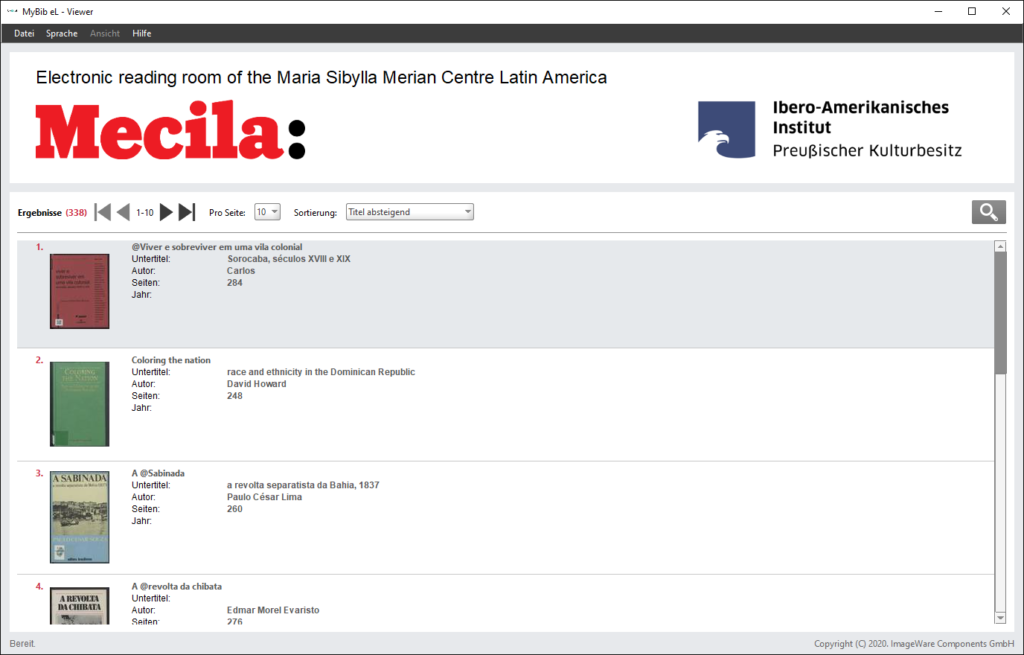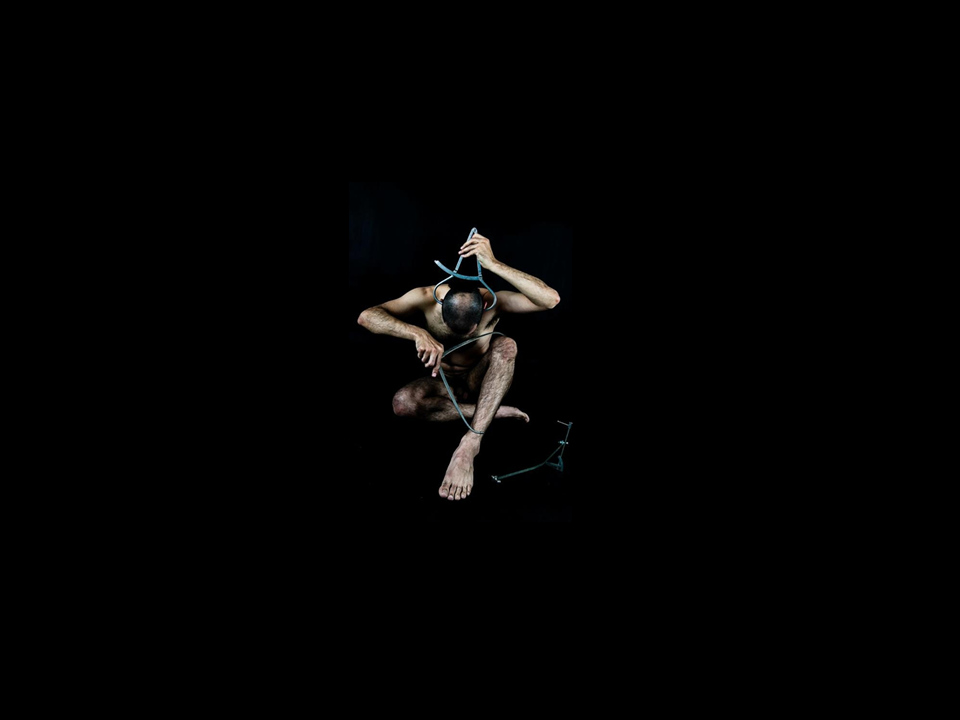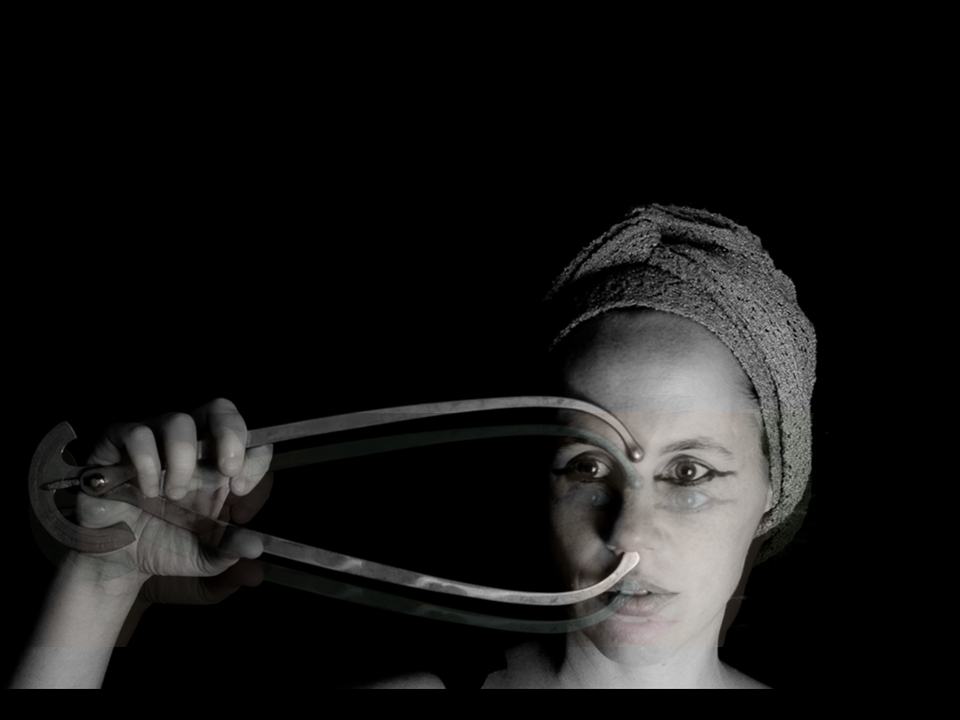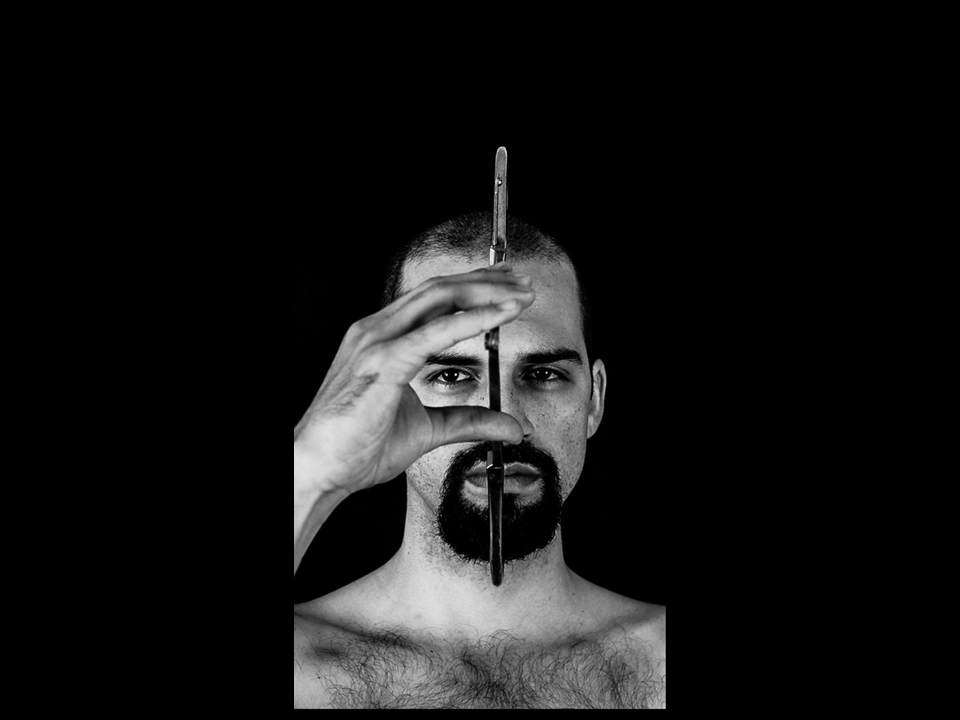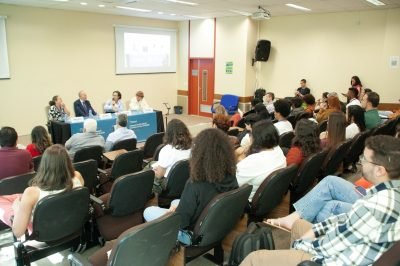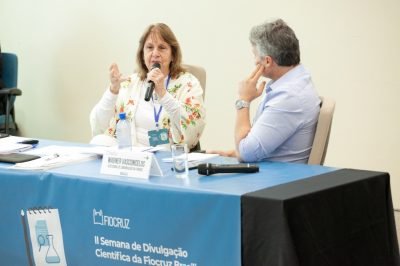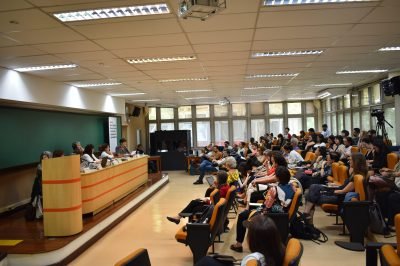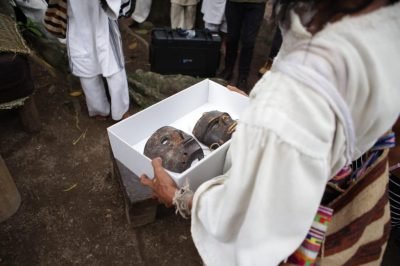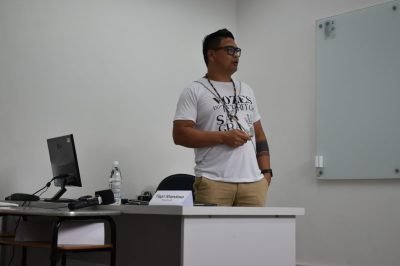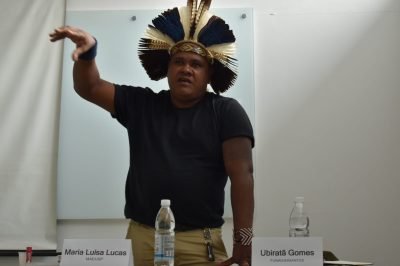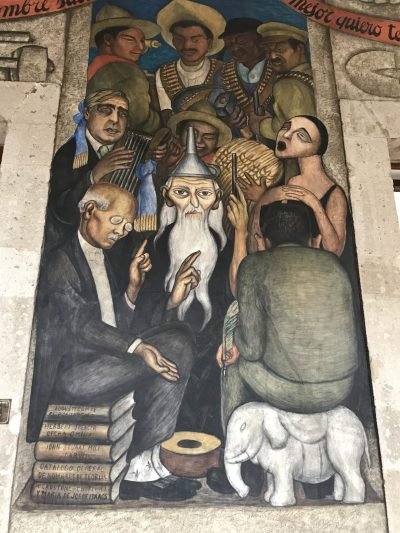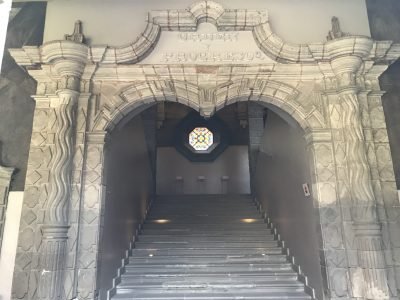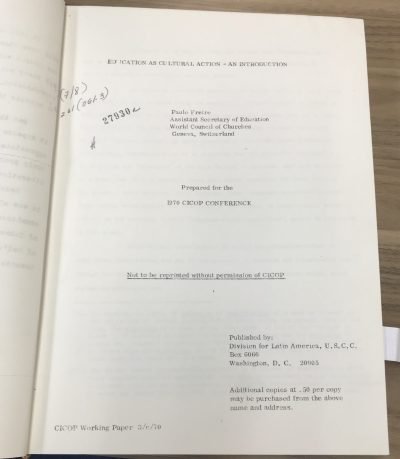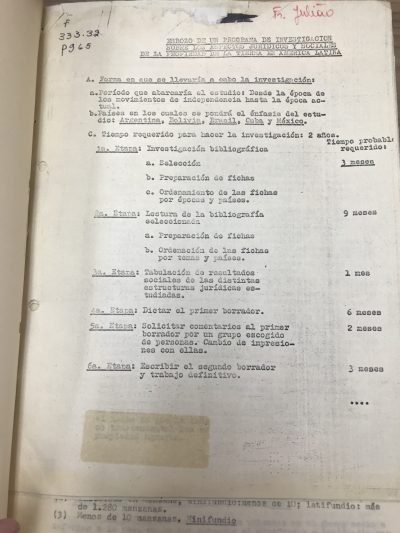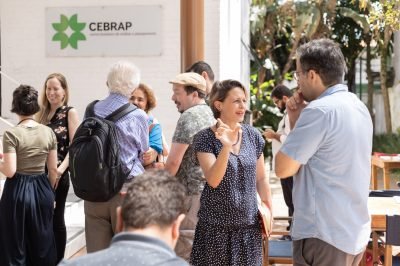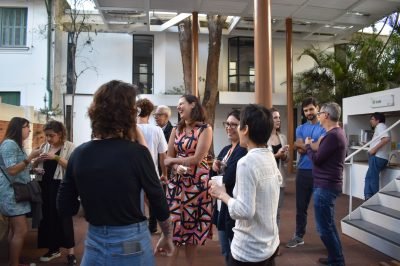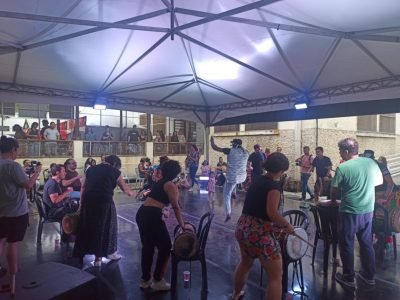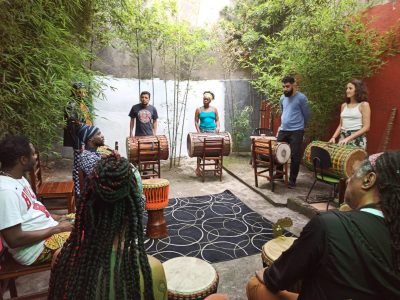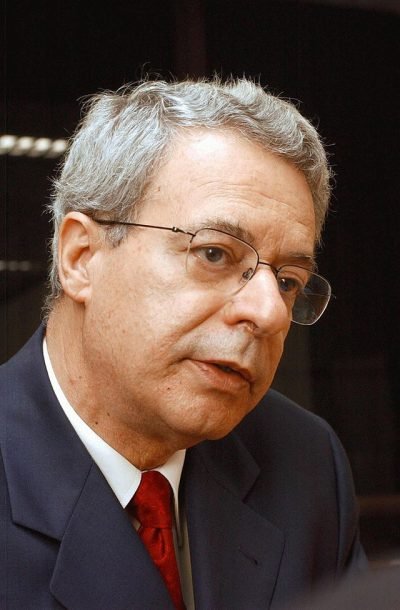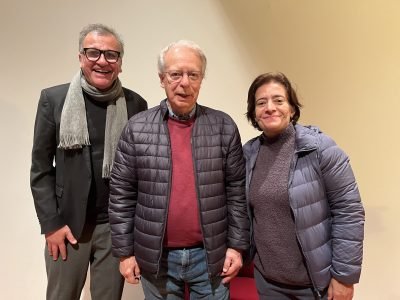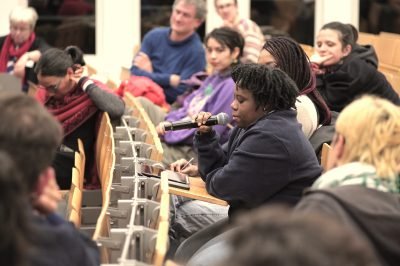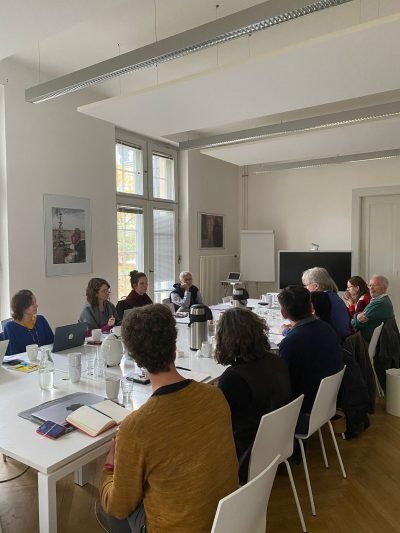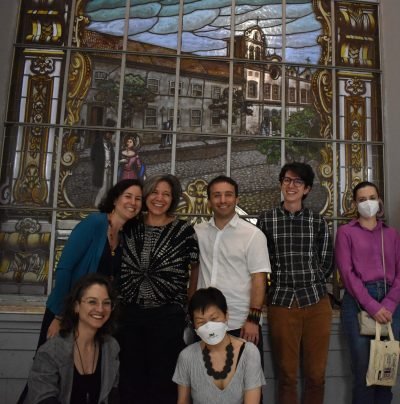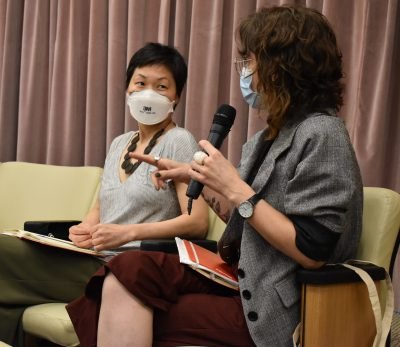Evanize Sydow (ES): Quero primeiro agradecer vocês todos por estarem aqui, ao professor Sérgio, à parceria com o Instituto Ibero-Americano e dizer que, para nós, é uma honra poder estreitar laços de cooperação. É um privilégio conviver um pouco durante estes dias com esse ambiente, junto com Frei Betto. Estamos trabalhando há seis anos no projeto dos filmes. Começamos com a ideia de um documentário baseado na biografia que escrevi, juntamente com o Américo Freire, e que a gente entendeu que havia a possibilidade de trazer uma linguagem nova para uma trajetória que é muito atual, a de Frei Betto. Ele é um personagem que circula muito, em grupos muito diferentes. Tem um grupo de amigos na área das artes, por exemplo, circula na área da literatura entre os seus pares, na Igreja e na política, nos movimentos sociais. Então, a gente tinha vontade de trazer um pouco dessa trajetória para uma linguagem cinematográfica. O projeto acabou ampliando-se e o que estamos produzindo é uma trilogia. São três documentários que abordam, cada um deles, aspectos particulares da trajetória de Frei Betto.
O primeiro, que está saindo agora, na segunda quinzena de março, aborda a trajetória de Frei Betto na educação popular, e traz toda sua experiência nos movimentos populares, nos movimentos sociais, já quando ele sai da prisão e vai viver numa favela em Vitória. E, depois, quando vai para a região do ABC e tem contato com as lideranças que hoje são algumas das lideranças mais importantes no Brasil, incluindo o próprio Lula. Na verdade, a gente revisita esse processo todo dele e atualiza esse trabalho. No Brasil, hoje, o governo está trazendo uma proposta de ampliar os educadores populares, o que confere atualidade renovada à educação popular. O Frei Betto está, inclusive, ajudando o governo nisso. Então a gente está atualizando esse tema, além de refazer toda a trajetória do Frei Betto dentro da educação popular, incluindo outros personagens que foram e são importantes para esse tema. Esse é o primeiro documentário.
O segundo, que sai em julho, é sobre os percursos literários do Frei Betto. E aí a gente vai retomar algumas obras-chave, recuperando toda a parte histórica de Minas que ele trabalha em seus romances. Enfim, há aí vários depoimentos interessantes, como o do escritor cubano Leonardo Padura, por exemplo. Muita gente não conhece os romances do Frei Betto, é um lado menos conhecido que sua obra memorialística.
O terceiro documentário é sobre uma expressão que ele cunhou, “fraternura”, que envolve justamente todas essas redes nas quais ele transita. Ele trabalha um pouco essa questão toda, ou seja, como se relacionar com grupos – de oração, por exemplo – e aqui entra a questão da espiritualidade.
Além desses documentários, há um longa metragem que vai sair, que é uma ficção com elementos documentais. É sobre um aspecto que é muito pouco trabalhado na obra de Frei Betto, principalmente no Brasil, que é seu papel internacional. A gente vai tratar muito sobre o papel e a importância dele em Cuba e, particularmente, como ele fez e continua fazendo esse trabalho de intermediação com países socialistas, não só Cuba, mas Cuba é o ponto principal.
Pablo del Teso, que está aqui e vai ser o diretor, é argentino. O ator brasileiro Henrique Dias vai fazer o papel de Frei Betto. E então esse é, digamos assim, o pacotão para a gente discutir e que vai enfatizar a importância do Frei Betto para a história, na construção de diversas pontes diferentes, e sua importância para o Brasil de hoje e para
os movimentos sociais. O primeiro documentário, por exemplo, traz o Guilherme Boulos falando como o Frei Betto é uma referência para ele. Ou seja, não só nos anos 1980 Frei Betto foi uma referência, temos uma nova liderança hoje que também tem Frei Betto como referência para o seu trabalho, tanto no dia a dia como em seu trabalho como parlamentar.
A linguagem cinematográfica permite mostrar o personagem Frei Betto de uma maneira mais lúdica para o público.
Frei Betto (FB): Há outro documentário que está sendo feito pelo diretor Roberto Mader, que dirigiu Condor (2007), sobre as ditaduras do cone sul, e outros filmes também. Mas o projeto do Roberto, que já começou as filmagens, segue em marcha um pouco mais lenta comparado com a produção da Evanize.
SC: Gostaria de passar ao segundo tema, o momento político brasileiro atual, certamente muito mais favorável que até 2022, mas ainda assim difícil e delicado. Não se pode ainda baixar a guarda, é preciso que estejamos muito atentos a cada passo para que não haja outros retrocessos. Sobretudo Lula, e não necessariamente o PT ou o sistema político como um todo, continua sendo o principal fiador e garantia da democracia e da justiça social, o que mostra a fragilidade dos acordos políticos existentes.
Frei Betto, gostaria de saber como vê as mudanças recentes no Brasil e a polarização social e política que continua existindo. Em uma de suas análises sobre o avanço da direita no mundo, você cita Carl Schmitt e sua teologia política. A explicação do que vivemos e temos vivido no Brasil passa por aí? Ou seja, será que a direita aprendeu do teórico autoritário alemão e tem conseguido recodificar a política e a vida em sociedade, de disputas por diferentes visões do bem comum, em uma luta irreconciliável entre amigos e inimigos?
FB: O professor Antonio Candido dizia que o maior benefício do socialismo não ocorreu em um país socialista, mas na Europa ocidental. Trata-se da social-democracia e que veio para deter a ameaça comunista aos países da Europa ocidental. A social- democracia veio para entregar os anéis de modo a não perder os dedos. E, com isso, a classe trabalhadora aqui na Alemanha Ocidental ganhou melhores condições de vida. Só que essa maquiagem do capitalismo acabou com a queda do muro de Berlim. A partir daí já não era preciso mais fazer concessões à classe trabalhadora. Então veio o caráter neoliberal do capitalismo com toda as suas agudizações na relação de classes. E, com elas, essa emergência da direita. A direita sempre existiu, ela só não tinha saído do armário como saiu agora, no mundo inteiro, porque já não há a ameaça comunista. Não há ameaça de outro sistema alternativo que possa realmente abalar os alicerces do capitalismo.
E essa polarização acontece favorecida pela religião. A esquerda cometeu um erro grave que vem lá da tradição iluminista que vê a religião como superstição, algo fadado a acabar com o avanço da humanidade e do pensamento científico. Esse fenômeno vai acabar? Isso é resquício dos tempos antigos? A história mostra que não. Pelo contrário, se fortalece. Eu tenho uma teoria por que a religião se fortalece. Nós temos um sistema de sentido pelo qual consciente ou inconscientemente norteamos a nossa existência. Dentre os vários sistemas de sentido, que não são muitos, são três ou quatro, o mais abrangente é o religioso. E por que? Porque é o único que explica o que é que havia antes do Big Bang. Ninguém, nem [Albert] Einstein, nem [Max] Planck, nem [Werner] Heisenberg explicam o que havia antes do Big Bang e o que haverá depois da morte de cada um de nós. Então não há nenhum outro sistema tão abrangente que explique desde a criação do Universo até a briga de João e Maria, a reconciliação, o perdão. E vai do mais abrangente ao mais íntimo. Só que, por um equívoco hermenêutico muito grave, se interpretou de uma maneira errada a frase de [Karl] Marx de que a religião é o ópio do povo. Ela foi lida fora de contexto.
É como hoje muitos cristãos fazem com a Bíblia, não é? A teoria literária ensina que uma boa leitura é um triângulo, é texto, contexto e pretexto. Ou seja, quem mais entende a obra de Goethe, o baiano ou o alemão? Evidente que o alemão. Agora, quem entende melhor o Jorge Amado. É o baiano. Quem entende melhor o Guimarães Rosa? É o mineiro. Porque está no contexto do texto, e isso favorece o pretexto, ou seja, a motivação, as consequências, os efeitos da leitura.
Aquilo foi tirado do contexto, inclusive do contexto histórico porque Marx critica Bakunin que propôs na Internacional Comunista que uma das condições de inscrição dos operários fosse o ateísmo. E Marx não aceita. O que importa é que seja revolucionário, não importa se tem fé ou não tem fé. Mas adotou-se o ateísmo como condição de ser comunista, e esse erro o capitalismo jamais cometeu. Pelo contrário, sempre manipulou a religião. Hoje a esquerda corre atrás do prejuízo. E não é fácil recuperar isso, por mais que, vamos dizer, taticamente, a esquerda queira agora lidar com isso. No Brasil, ela conseguiu lidar muito bem e por isso ela engordou politicamente através do PT graças às Comunidades Eclesiais de Base. Mas esse é um fenómeno que não é universal e que refluiu na própria América Latina depois de 34 anos dos pontificados conservadores de João Paulo II e Bento XVI.
Então houve um refluxo desse fenômeno. Mas o fenômeno religioso é o substrato cultural de bilhões de pessoas. Na América Latina, ele é o substrato cultural de toda a população, com exceção do Uruguai. O único país laico da América Latina é o Uruguai. O resto, se você pergunta a um camponês, a uma faxineira, o que é que eles pensam da vida, do mundo da morte, virá uma resposta em categorias religiosas. E, no entanto, a esquerda menosprezou e a direita sempre manipulou isso inteligentemente.
Aqui na Europa, principalmente neste país, na Alemanha, onde se criou a teologia política – e aqui entra a questão do Carl Schmitt – nunca conseguiram entender como é que eu, frade cristão, posso aceitar o marxismo como método de análise. Se há uma coisa em que o Kremlin e o Vaticano são idênticos é que, para o Vaticano, o comunismo é uma outra religião. E para o Kremlin, o cristianismo é uma outra ideologia. Estão equivocados. Estão equivocados porque não são, são coisas absolutamente distintas. O marxismo é uma sociologia, uma ciência se você quiser, de interpretação dos dados da realidade objetivamente ao nível da razão, enquanto a religião, não. A religião é supra-racional, não é irracional, mas é supra-racional. Ela está na dinâmica da fé, do sentimento, da subjetividade. E você crê. Agora é evidente que a tradição marxista tem muito de conteúdo religioso, é uma religião laicizada. Conheci estruturas de partidos comunistas que tinha papa, cardeal, bispo, heresia, pecado, condenação – igualzinho! Enfim, a questão é outra, é manter essa sabedoria de entender que a relação entre fé e política sempre existiu e sempre existirá, isso são favas contadas. A questão é como não confessionalizar a política, o que o Bolsonaro queria fazer. E ao mesmo tempo, como não partidarizar a religião. Esse é o desafio. Você não pode estabelecer que na minha igreja só entra quem é do PT. Ou só entra quem é de outro tal partido, não pode isso. Quer dizer, a sabedoria está em respeitar hoje a conquista da modernidade [que é a separação] entre religião e política, mantendo o caráter laico da política. Muita gente fica chocada no Brasil, quando afirmo que sou a favor, primeiro, que as igrejas paguem impostos. Você quer lavar dinheiro no Brasil legalmente? Funda uma igreja. Sou por tirar o crucifixo dos locais públicos, dos tribunais, por exemplo. Não vejo razão por que uma religião predominante mantem seu símbolo num lugar não religioso, não vejo razão. Mas, por outro lado, também não vejo razão numa missa, na nossa comunidade, colocar uma bandeira do PT no altar, não tem nenhum sentido isso. Essa questão precisa ser melhor trabalhada.
Mas o problema é que a direita hoje tem essa vantagem de saber manipular a religião. Diga-se de passagem que a maior crítica que Jesus faz nos Evangelhos não é a quem não tinha religião (já que não havia esse fenômeno na época dele) nem a quem tinha outra religião, como o caso dos romanos, que eram pagãos – ao contrário do que alguns pensam, o paganismo é uma religião, não é ausência de religião. A crítica de Jesus era principalmente àqueles que tinham uma religião muito semelhante à dele, os fariseus. A maior crítica que ele faz é à religião na qual ele nasceu. Então a crítica da religião não pode ser a antirreligiosidade. Essa é a questão. Você pode ter o direito de não ter fé, de ser agnóstico, ateu, graças a Deus, como muitos no Brasil. Mas o que não pode é politicamente adotar a atitude antirreligiosa, porque é um desrespeito ao povo. Essa é a questão. É como hoje ser homofóbico, misógino, anti isso e aquilo. Não pode ser anti. Tem que respeitar. E não tolero a palavra tolerância. Tolerar é assim, “eu não suporto, mas vou educadamente aguentar”. Não, tem que respeitar, essa é a questão, não é tolerar. Tem que erradicar isso. Sou intolerante com a tolerância. Então, esse o desafio fundamental.

